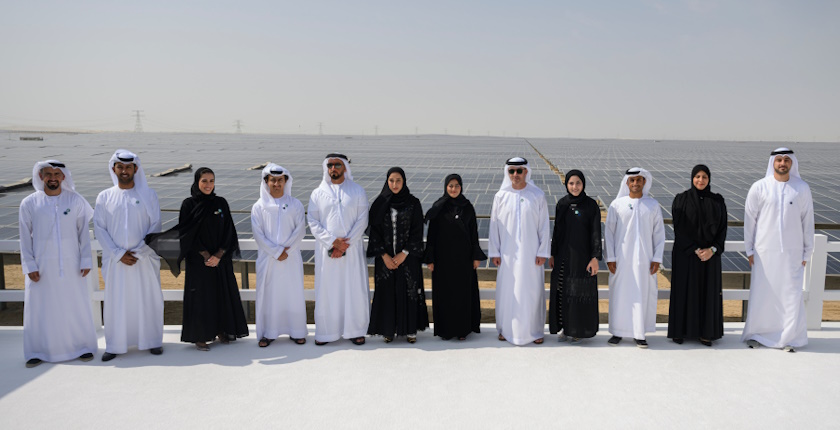
Photo: Masdar
The Al Dhafra solar power plant, with 2 GW in capacity, was completed in the United Arab Emirates, the host of this year’s United Nations Climate Change Conference COP28. The facility can cover the electricity needs of 200,000 households.
The project was carried out by the Abu Dhabi National Energy Co. (TAQA), UAE-owned Abu Dhabi Future Energy Co. (Masdar), France’s EDF Renewables, and Jinko Power, based in China. Deputy Ruler of Abu Dhabi Hazza bin Zayed Al Nahyan cut the ribbon for the Al Dhafra system.
“As the UAE prepares to host COP28, this pioneering project reflects the country’s ongoing commitment to raising its share of clean energy, reducing its carbon emissions, and supporting the global efforts on climate action”, he said.
Located 35 kilometers south of Abu Dhabi city, the photovoltaic plant was built in a single phase. It generates enough electricity to power almost 200,000 homes in the UAE, Masdar said. The Al Dhafra Solar PV facility spans more than 20 square kilometers of desert.
It consists of almost four million bifacial solar panels. The devices generate electricity from the bottom side as well, using the reflection of sunlight. Masdar claims it is the largest single-site solar power plant in the world. It is among the top five overall.
Solar power in the UAE is the cheapest in the world
The project was commissioned by the state-owned Emirates Water and Electricity Co. (EWEC). The lowest price in the world to date was reached at the tender, USD 13.5 per MWh, but it was subsequently reduced to USD 13.2 per MWh.
TAQA owns 40% of the system while Masdar, EDF Renewables, and Jinko Power have 20% each. EWEC signed a 30-year power purchase agreement with them in 2020. The PV plant raised Abu Dhabi’s solar energy capacity to 3.2 GW, Masdar says.
The UAE is currently in second place in the world in terms of solar energy consumption per capita
The UAE currently ranks second in the world in per capita solar energy consumption, according to data from the Statistical Review of World Energy, published by the Energy Institute.
On the other hand, state-owned oil company ADNOC plans to increase crude oil production from the current three million barrels per day to five million by 2027 at the latest.
The topic of phasing out fossil fuels, the main source of wealth in the Persian Gulf, to reduce emissions is expected to be a key issue at the COP28 meeting in Dubai. It starts on November 30.


















Be the first one to comment on this article.